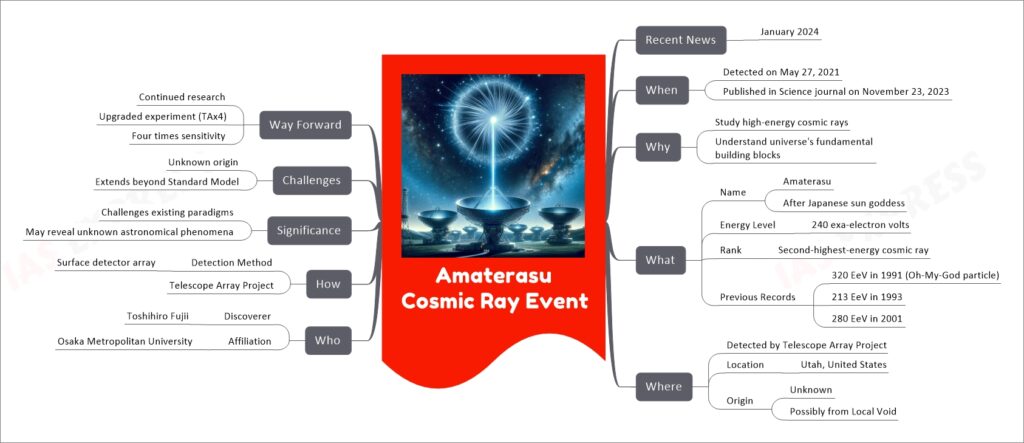Amaterasu Cosmic Ray Event

The Amaterasu cosmic ray event refers to the detection of an ultra-high-energy cosmic ray named after the Japanese sun goddess. It was identified as the second-highest-energy cosmic ray ever found, with energy levels reaching 240 exa-electron-volts. Detected on May 27, 2021, by the Telescope Array Project in Utah, USA, the cosmic ray’s origin remains a mystery. It was discovered by Dr. Toshihiro Fujii from Osaka Metropolitan University. This event is significant as it challenges existing scientific paradigms and could potentially reveal unknown astronomical phenomena or novel physical origins that extend beyond the current Standard Model of particle physics.
If you like this post, please share your feedback in the comments section below so that we will upload more posts like this.

